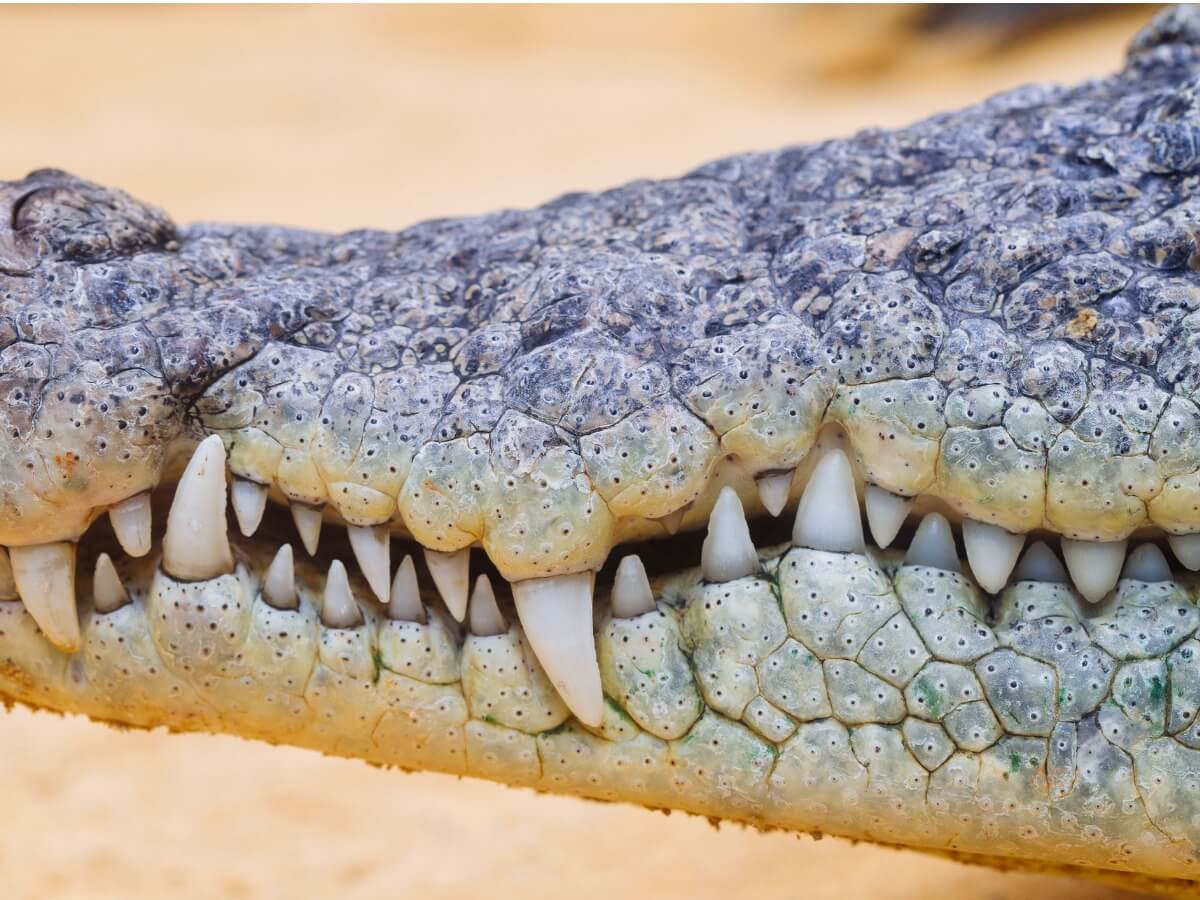10 Reptiles You Shouldn't Keep (If You're a Beginner)


Written and verified by the biologist Cesar Paul Gonzalez Gonzalez
Reptiles are rather peculiar animals, because, unlike other animals people keep as pets, they aren’t usually affectionate. Despite this, some of them have curious colors and shapes that attract a lot of attention, so they’ve become popular as pets. Still, there are some reptiles you shouldn’t keep if you’re a beginner, and we’ll tell you all about them in this article.
All species have different basic needs, but some are more sensitive to certain situations that can be lethal for them. For this reason, and while the keeper gets used to dealing with these scaly specimens, it’s best to avoid having reptiles that are difficult to care for. Read on and find out which reptiles you shouldn’t keep if you’re still a beginner.
Do reptiles make good pets?
Reptiles are animals with obvious ancestral characteristics, as some of them look like “small dinosaurs” at first sight. These traits and some incredible colorations make them quirky pets that many people love to keep in their homes or in an enclosed space.
Another advantage is that these animals usually require less care and attention than a dog or cat, which makes them perfect for people with little time during the day. However, to keep one, you need a habitat (terrarium) with the necessary conditions, which usually involves a significant investment of money.
This doesn’t mean that having a reptile is expensive, as some species don’t require much care to survive. If you choose your pet well, rest assured that you’ll have a faithful companion that will adapt to your needs and your pocket.
Types of reptiles you shouldn’t keep as a beginner
As mentioned, some types of reptiles need specific care, so any error or variation in their environment could be lethal. In this way, changes in temperature, humidity, feeding, lighting, habitat size, or home decoration can affect their existence.
The reptile keeper must find out about all the important aspects of their pet, which implies investing time in learning and adapting to them. Each species has a different degree of difficulty, which means that not all of them are easy to keep in captivity. Listed below are some reptiles you shouldn’t keep if you’re still a beginner.
1. Iguanas
Their similarity to lizards may likely make you think that they’re easy to care for, but this isn’t at all true. For starters, you should keep in mind that iguanas grow very large and you’ll need a fairly large habitat for them to thrive.
These animals aren’t social and handling them can be complicated and dangerous. At first, they may see you as a threat, so they’ll try to bite you if you bother them. It’s true that some breeders form very strong and friendly bonds with iguanas, but to achieve this you must have a lot of patience and experience.
Its diet should be very well balanced, because, even though it eats fruits and vegetables, it requires a lot of variety. In some regions, this means it’ll be an expensive pet to keep, as its preferred food isn’t usually cheap.
Generally speaking, the biggest disadvntages of keeping an iguana are the cost of its maintenance and its specific care.
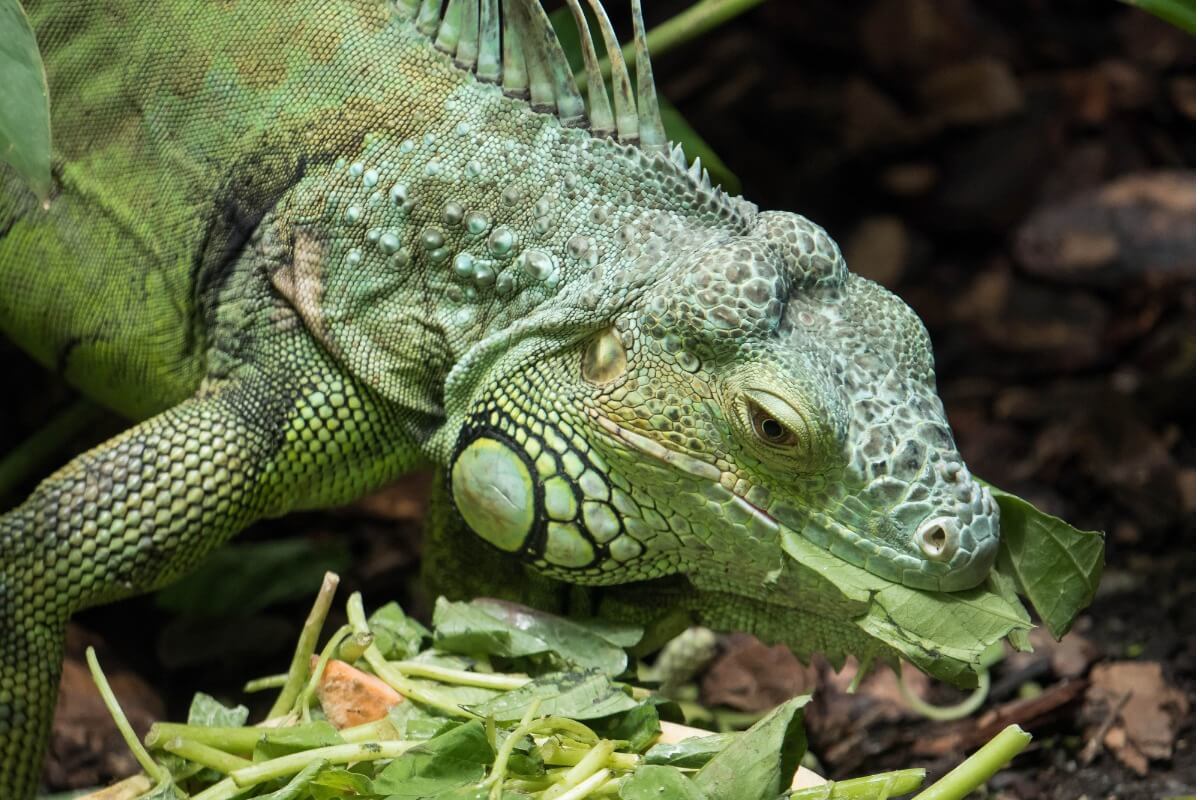
2. Reticulated python (Python reticulatus)
These reptiles are real giants, reaching sizes of 7 meters (23 feet) and weights of 158 kilograms (350 pounds). For this reason, the reticulated python is a species that’s difficult to keep and needs a large living space. In some cases, the habitats of these animals consist of entire rooms, so you should take this into account before acquiring one.
These pythons grow quite fast and, in a short time, they’ll reach enormous sizes. On top of that, they don’t exhibit “affection” towards their keepers, which means that if you aren’t careful you can have an accident when handling them. In fact, as scary as it sounds, there are several fatal cases in which this python has been responsible for the death of its keepers.
This doesn’t mean that it’s impossible to keep this reptile, but you need to have the necessary experience to know what to do in case of an emergency. When it comes down to it, these animals just follow their instincts, so you need to understand your pet very well to know how to interact with it.
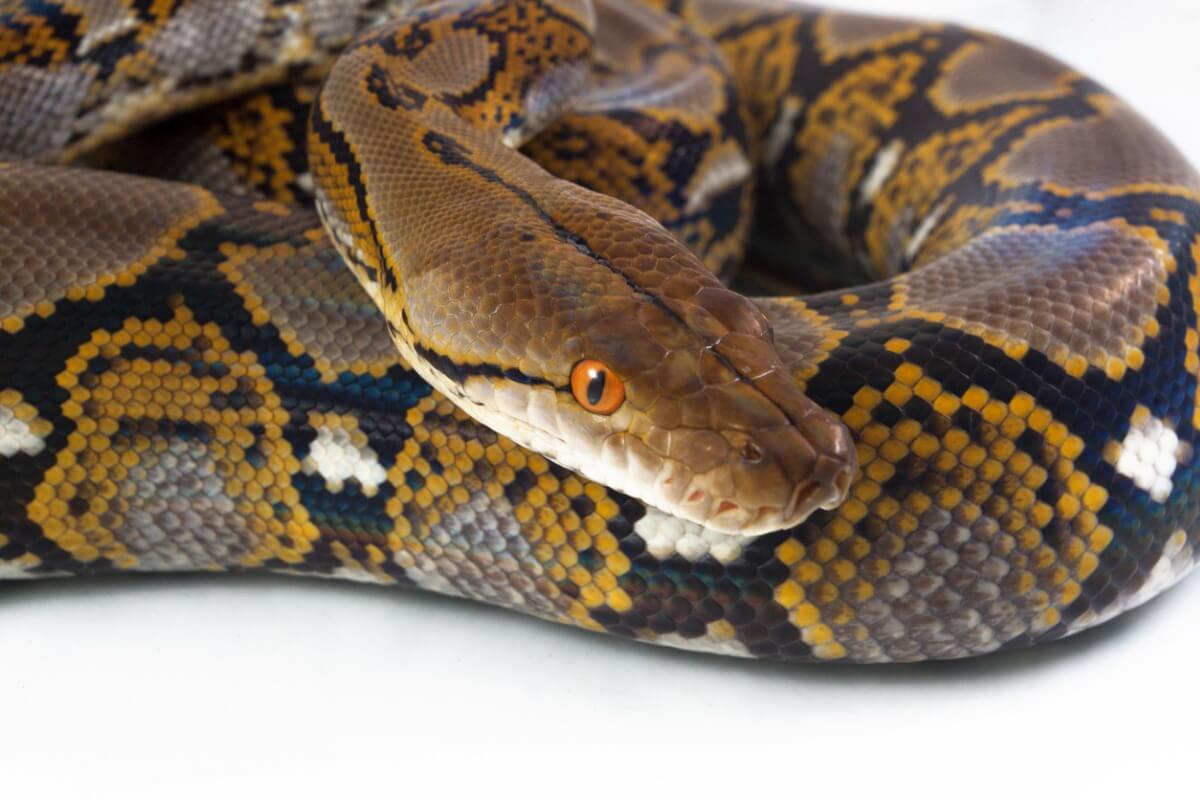
3. Nile monitor lizard (Varanus niloticus)
This huge lizard can exceed 2 meters (6.5 feet) in length, making it another difficult species to keep in captivity. In addition to this, these reptiles are quite fond of climbing and swimming, which is quite difficult to provide in an artificial habitat. Thus, the main challenge of keeping a Nile monitor lizard as a pet is in maintaining its habitat.
To make matters worse, these lizards don’t like being handled and may even attack and injure you. In the case of reptiles, it isn’t always possible to establish a relationship of “affection” between the owner and the pet, as it depends a lot on the temperament of the animal. In the end, you must be aware that you can’t treat it as just a normal pet.
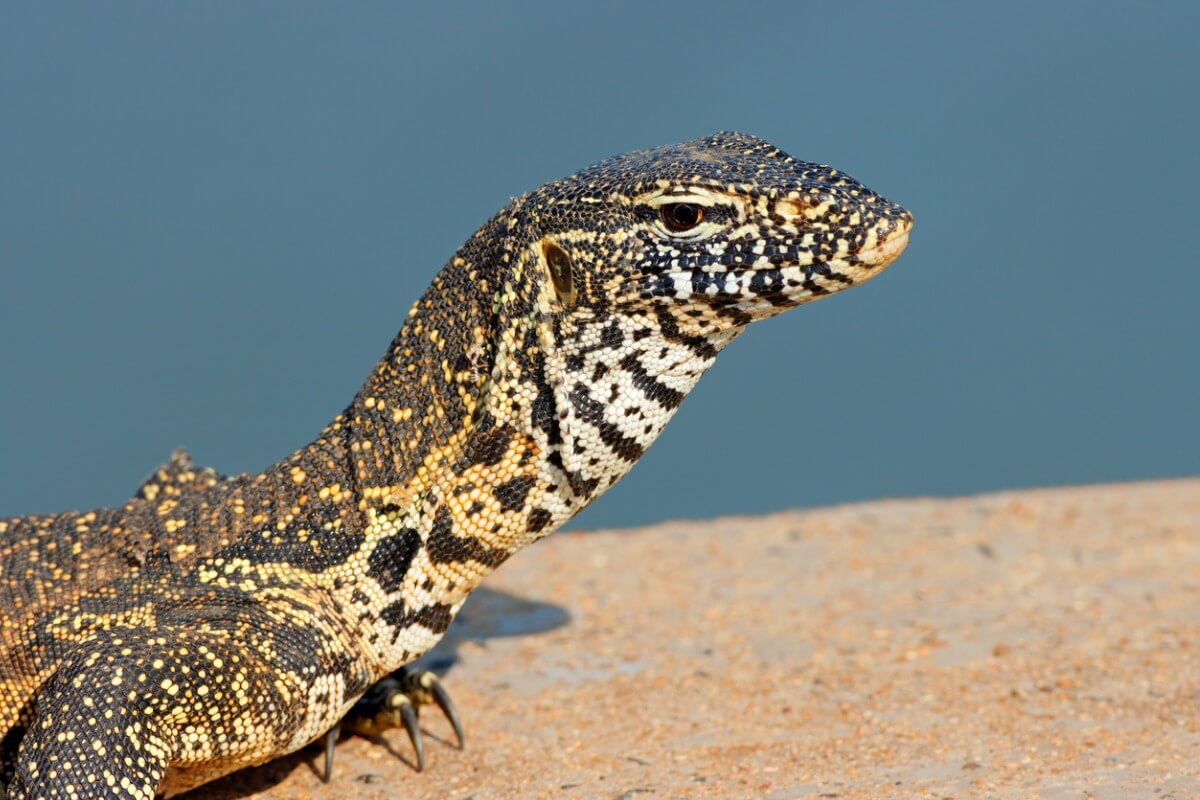
4. Chameleons
Although they may seem beautiful organisms that are easy to look after, the reality is that these reptiles are quite sensitive to changes. The problem with chameleons is the stress they can suffer due to the poor conditions of their habitat, which leads to diseases and possible death.
There are three main essential care tips, and the health of the animal depends on carrying them out scrupulously.
The first is the humidity of their environment, which must be quite high with good airflow. The second is temperature and exposure to ultraviolet light, since reptiles need both for their metabolism to work properly. Finally, the third point is the layout of their habitat, as they’re shy reptiles that need a place to hide.
Chameleons with arboreal habits require trunks or some kind of climbing structure. The purpose of this is to try to simulate the chameleon’s natural environment, as it makes them feel more comfortable, which greatly reduces their stress.
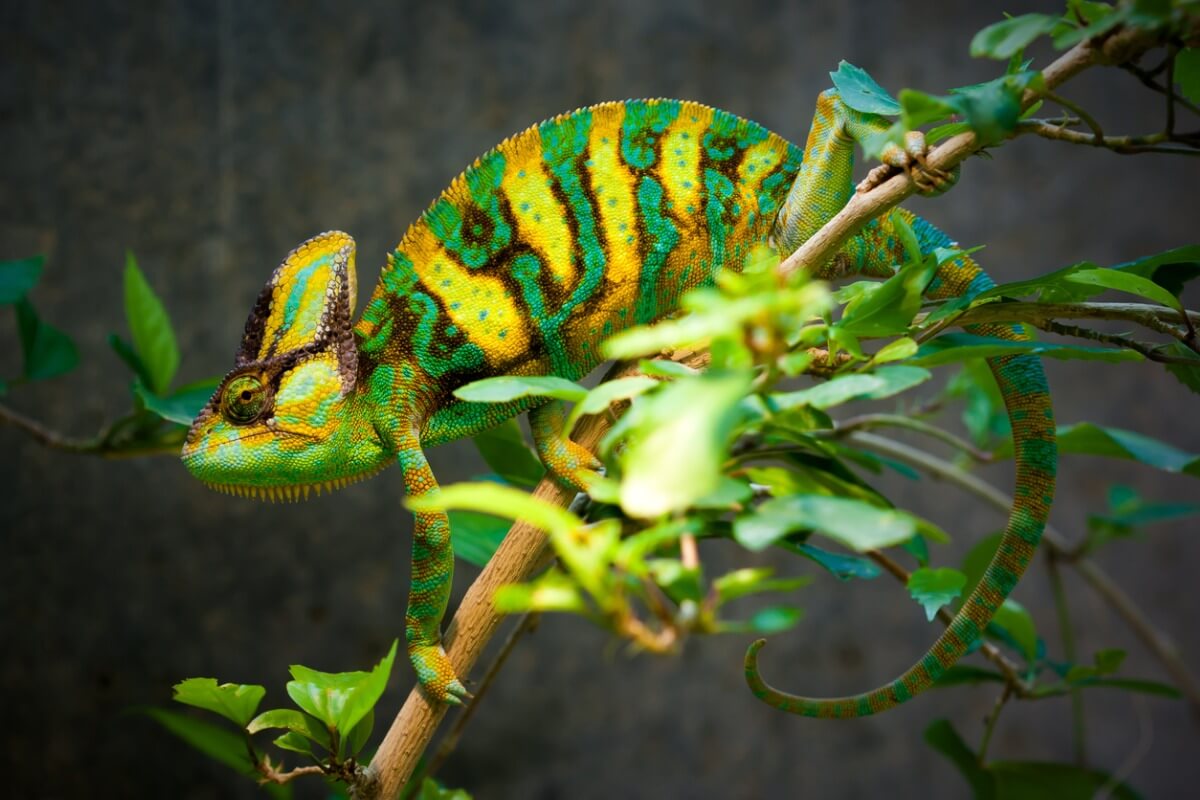
5. Tortoises and turtles
You may find this strange, as turtles are supposed to be one of the easiest reptiles to keep. However, it’s not all that simple, as you have to take into account their size and life expectancy. Although when they’re hatchlings they can live in very small aquariums, as they grow, turtles need a wide area to move easily.
In addition to this, domestic turtles usually live around 20 years on average, so you must be prepared to take care of them during this time. In some cases, owners don’t behave responsibly and release them into the wild. This situation has caused certain species to become an ecological problem in certain countries.
Caring for a pet may seem simple at first, as it’s normal to feel affection for the new member of your family. However, not everyone is prepared to acquire a responsibility that will last for years, because as time passes, looking after it often becomes tedious and repetitive.
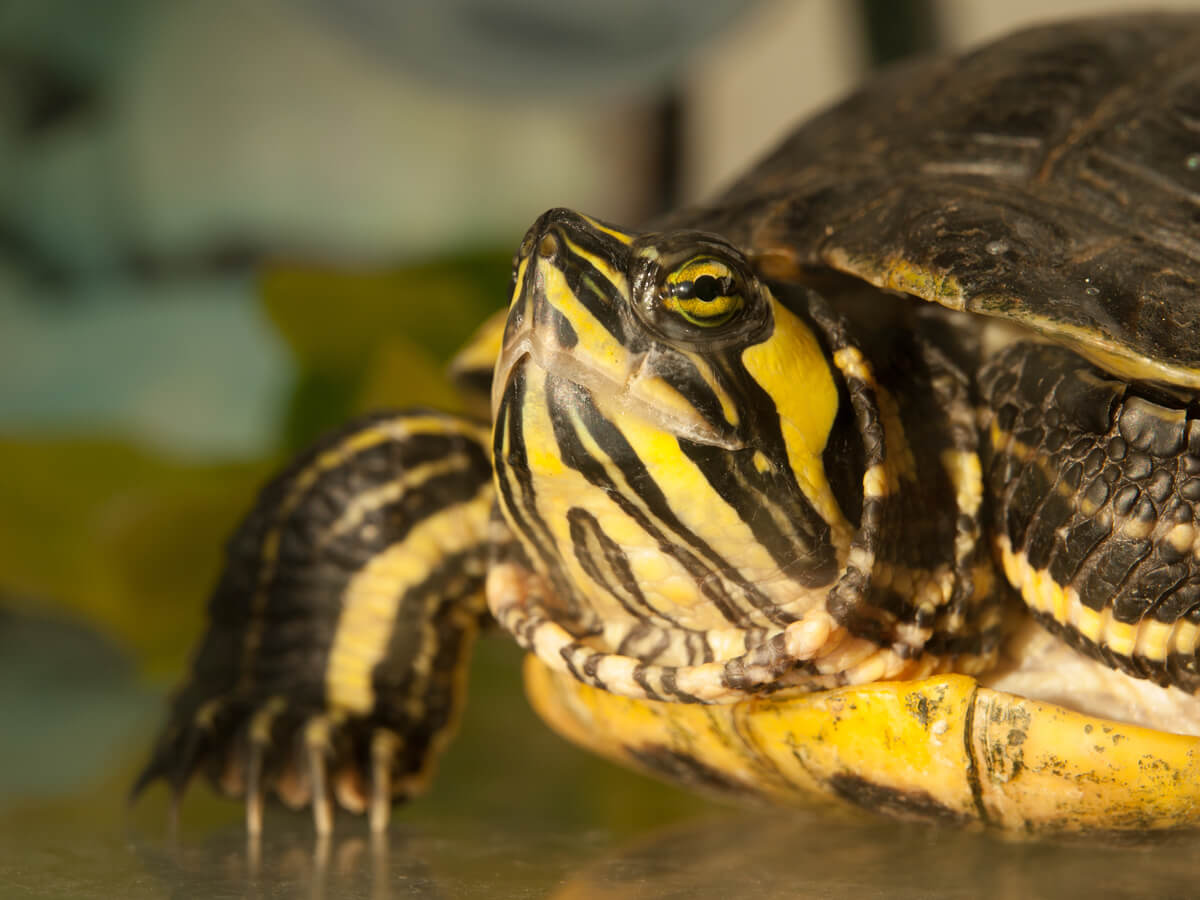
6. Argentine giant tegu (Salvator merianae)
This huge lizard can cause certain problems in their care, as their hygiene and voracity make them difficult to maintain. On top of that, this reptile needs a habitat that has platforms, ultraviolet light, humidity, and ample space to walk around. This means that their care is very specific and you need to be very attentive to the conditions of their home.
In addition, the Argentine tegu doesn’t have much self-control as regards eating, which means its keeper needs to be careful that it doesn’t overfeed it. While consuming its food, it tends to soil its entire habitat, so. if it’s not cleaned properly, harmful bacteria or fungi can grow. Consequently, this reptile is difficult to care for because of the attention it requires.
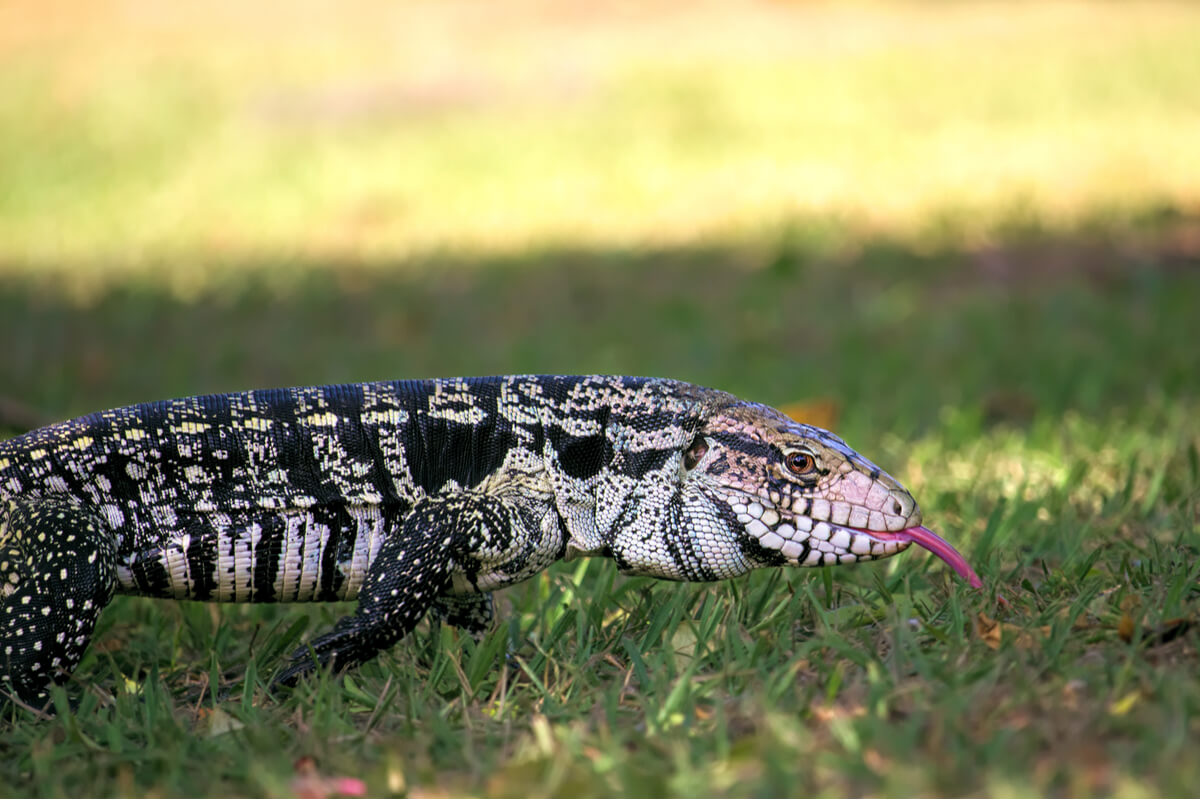
7. Crocodiles
It would probably never have occurred to you to keep this reptile as a pet, but it is actually possible under certain strict rules and regulations. In fact, contrary to what you might think, keeping baby crocodiles is quite simple for experienced keepers. Thanks to this, in some countries like Mexico they’re allowed to be kept as pets.
One of the main challenges in their care is their size, as most of these animals reach very large sizes. For this reason, at first, they may be easy to keep, but, as they develop, they begin to have problems with lack of space. In addition, crocodiles are aquatic creatures and a large amount of water with a certain temperature is needed to keep them healthy.
To top it off, when the reptile is more than a meter long (3.3 feet) its bite can already be lethal. This means that after a certain period of time, you’ll need the help of an expert to relocate it to a place where it can be cared for. If not, you and your family may run the risk of a serious accident.
8. Anacondas
As you can imagine, anacondas are not a good choice for beginners, as they’re the heaviest boas around. They also need a huge amount of space to stay healthy, as their habitat must contain both water and land areas (as they’re semi-aquatic animals).
To top it all off, anacondas tend to have a very bad temperament, which means they aren’t easy to care for or handle. Consequently, to keep an anaconda you’ll need a lot of experience and a big budget, as both its food and habitat will be quite expensive.
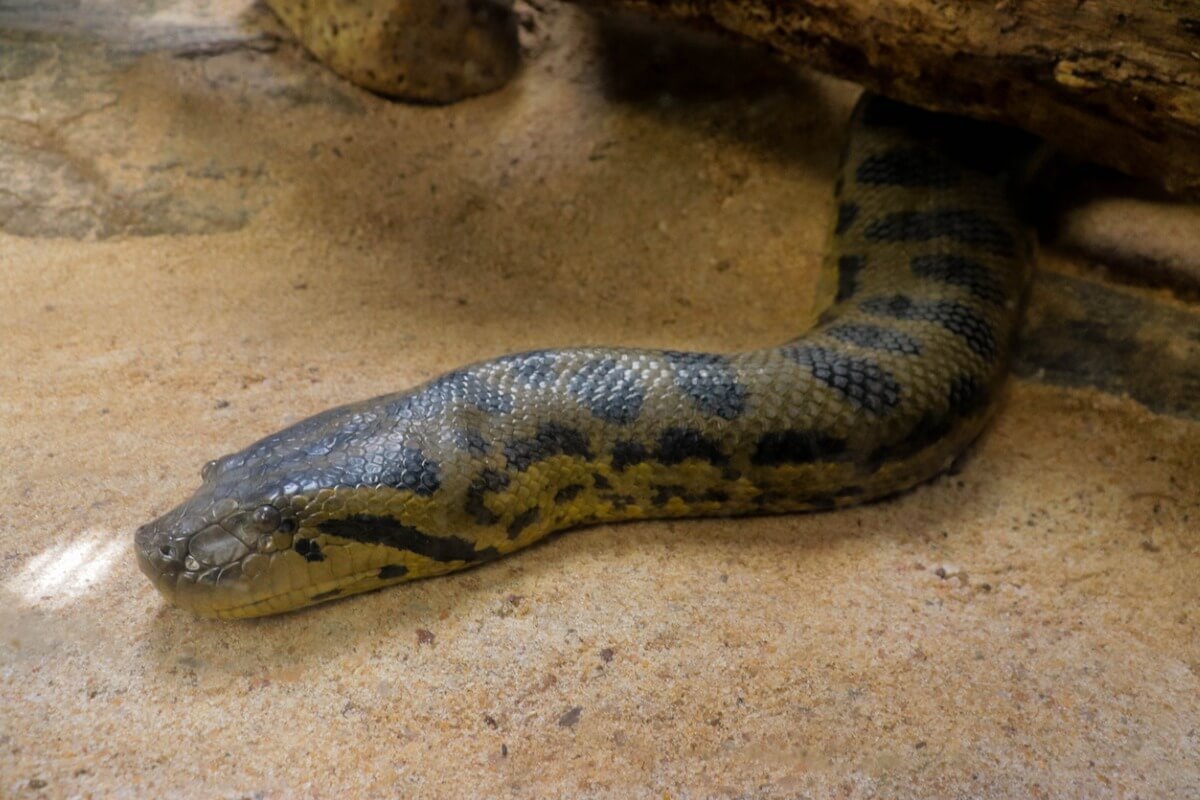
9. Venomous snakes
Venomous snakes are one of the most difficult exotic reptiles to keep, as all the difficulty lies in handling and safety. This means that not only do you have to be careful with maintaining your pet’s needs, but you have to be prepared for any life-threatening event.
Simply put, to keep a snake you have to learn how to handle both venomous and non-venomous reptiles in order to know what to do in case of any emergency. In addition, you need to make sure that the snake can’t escape, and it requires a sturdy, high-quality habitat. Consequently, venomous snakes will never be a good option if you’re a beginner, and even if you’re experienced you have to be extremely careful.
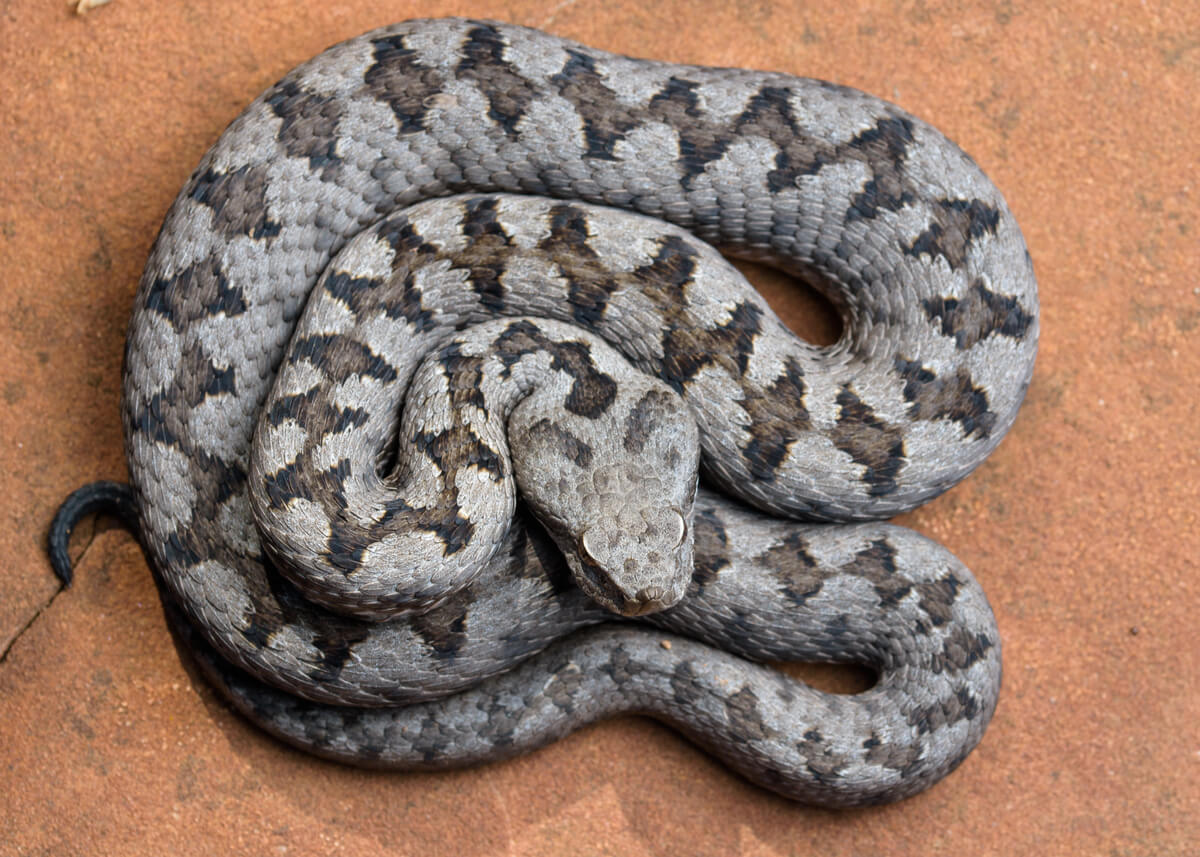
10. Water monitor (Varanus salvator)
The main complication when trying to keep a water monitor is its size, as it can reach up to 3 meters (9.8 feet) in length. In addition, they don’t feel comfortable with intruders and if you’re not careful they can attack you when you try to handle them.
This means that water monitors need a large habitat to live in, with the necessary accessories for them to develop fully. Likewise, they shouldn’t be forced to have contact, so you have to be patient and have experience in handling reptiles.
This isn’t a good choice for beginners, as you need to be used to handling very large reptiles with powerful claws and jaws.
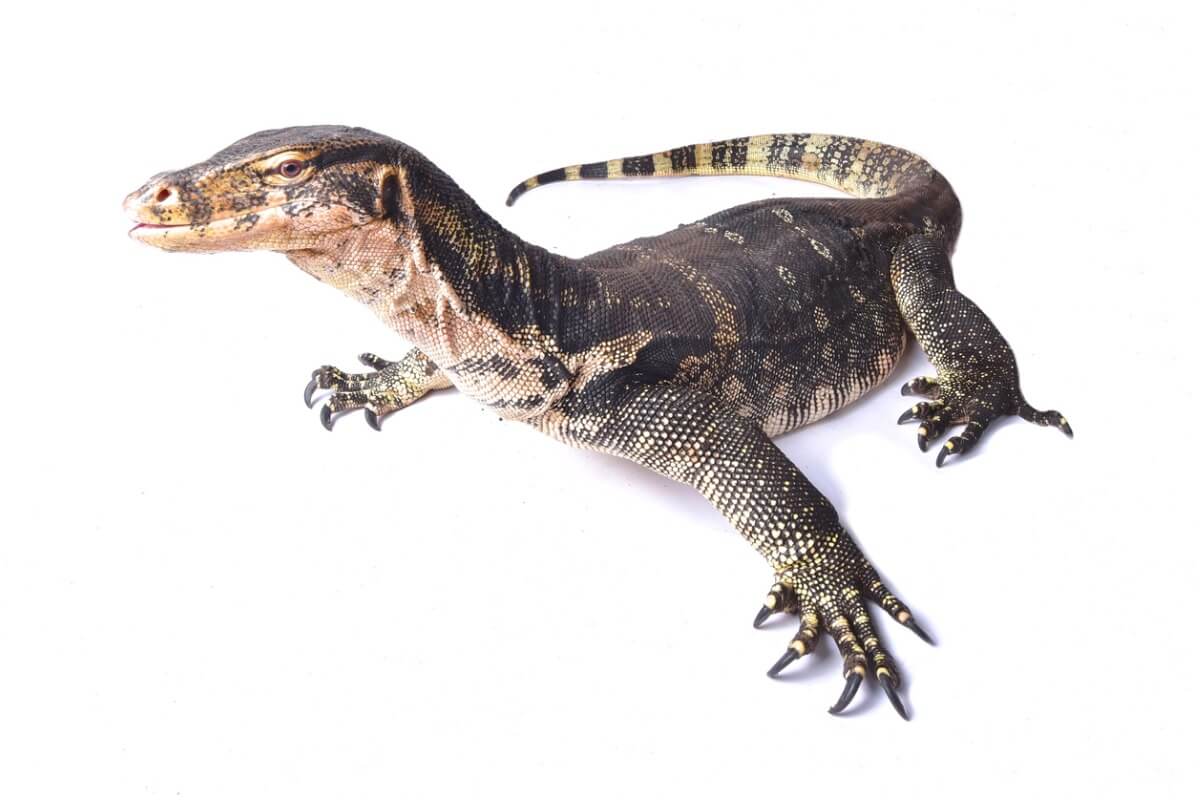
As you can see, reptiles can be beautiful pets if they’re chosen with care. This doesn’t mean that you’ll never be able to keep any of the above reptiles, but, as a beginner, you should start with simpler ones to gain experience. Remember to choose an animal that’s well suited to your needs so you have no problems in giving them a full and satisfying life.
All cited sources were thoroughly reviewed by our team to ensure their quality, reliability, currency, and validity. The bibliography of this article was considered reliable and of academic or scientific accuracy.
- Luna-Reyes, R., Canseco-Márquez, L., Hernández-García, E., & Comisión Nacional para el Conocimiento y Uso de la Biodiversidad. (2013). Los reptiles. Comisión Nacional para el Conocimiento y Uso de la Biodiversidad (Ed.). La biodiversidad de Chiapas, Estudio de Estado: México. Comisión Nacional para el Conocimiento y Uso de la Biodiversidad (CONABIO)/Gobierno del Estado de Chiapas, 319-328.
- Rodríguez Molano, H. R. (2015). Manual de diagnóstico y tratamiento de neumonías en saurios y quelonios, mantenidos como mascotas no convencionales. Universidad de La Salle.
- Viñas, M., & Gnida, G. (1985). Sobre el comercio de anfibios y reptiles en la Argentina. Boletín de la Asociación Herpetológica Argentina, 2.
- Fuentes-Mascorro, G. EMPLEO DE REPTILES SILVESTRES EN OAXACA. Estudios sobre la fauna silvestre de México y las interacciones humano-animal, 78.
- Hernández Cordero, A. (2019). Serpientes: atención y cuidados en cautiverio. Universidad Autónoma del Estado de México.
This text is provided for informational purposes only and does not replace consultation with a professional. If in doubt, consult your specialist.
